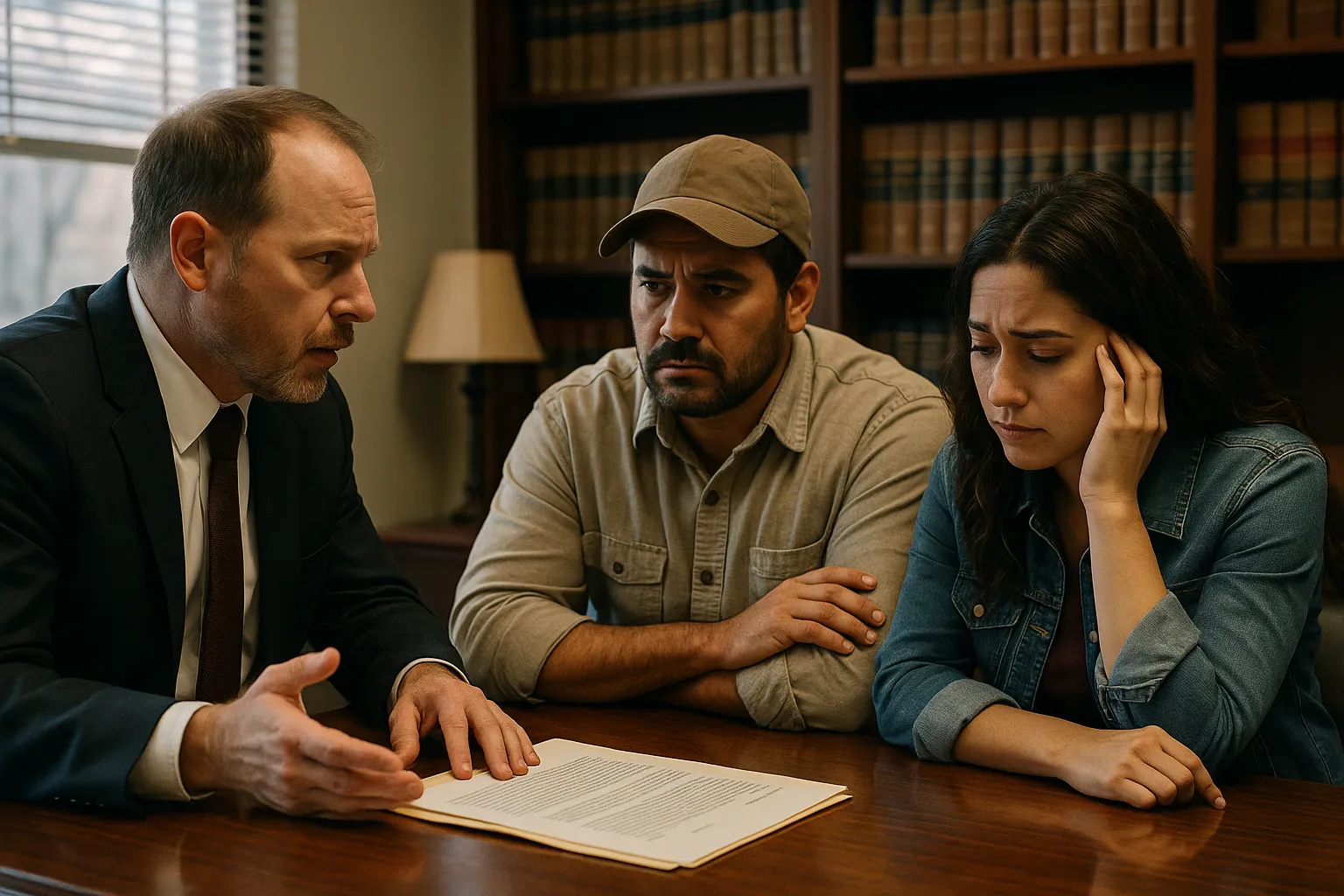Understanding Punitive (Exemplary) Damages in Texas
Punitive damages, also called exemplary damages, are financial penalties meant to punish and deter wrongful behavior — not to repay accident victims for their actual losses.
In Texas, punitive damages are rare. They require proof that the defendant’s actions involved gross negligence, fraud, or malice, based on the standards set in Texas Civil Practice and Remedies Code § 41.003.
Quick Answers You Need
- Punitive damages punish egregious conduct, but only apply in severe cases under strict Texas law.
- Texas caps punitive damages based on a set formula: 2x economic damages + non-economic damages (limited to $750,000), or $200,000, whichever is greater.
- Strong evidence of fraud, malice, or gross negligence is required before punitive damages can be awarded.
Definition of Punitive Damages: Financial penalties ordered to punish defendants for extremely harmful behavior, rather than compensate the victim.
What Are Punitive (Exemplary) Damages in Texas?
Unlike compensatory damages, which cover medical expenses or lost income, punitive damages are awarded to send a strong message to defendants whose behavior was exceptionally reckless.
According to Texas law, you must first be awarded actual damages (like medical bills, property damage, or pain and suffering) before a court can consider adding punitive damages.
You can learn more about types of damages you may claim in our full guide on what damages you can claim in a Texas wrongful death lawsuit.
How Punitive Damages Differ from Compensatory Damages
| Type of Damages | Purpose | Awarded When |
|---|---|---|
| Compensatory | Reimburse the victim’s financial and emotional losses | In almost every personal injury case |
| Punitive | Penalize severe misconduct and deter future wrongdoing | Only in extreme cases proven by clear evidence |
Eligibility Criteria for Punitive Damages in Texas
Gross Negligence
Texas defines gross negligence as more than just carelessness. It occurs when someone consciously disregards a substantial risk of serious harm to others.
For example, a trucking company that forces a fatigued driver onto LBJ Freeway, causing a collision, could face gross negligence claims.
Fraud or Malice
- Fraud involves intentional deception.
- Malice means intending to harm someone else.
A company that knowingly sells defective airbags to save money could be liable for fraud if those airbags fail during a crash.
The Clear and Convincing Evidence Standard
To succeed in claiming punitive damages, Texas law requires clear and convincing evidence, meaning the jury must be firmly convinced that gross negligence, fraud, or malice occurred.
If you are managing injuries and overwhelming paperwork after an accident, our overview of the 6 key points of the injury claim process may help you understand your next steps.
How Punitive Damages Are Calculated in Texas
Even if a defendant’s actions warrant punitive damages, Texas law limits how much you can actually receive.
The formula outlined in Texas Civil Practice and Remedies Code § 41.008 controls the award:
Punitive damages are limited to the greater of:
- $200,000, or
- (2 × Economic Damages) + Non-Economic Damages, capped at $750,000.
Examples of How Punitive Damage Caps Work
| Scenario | Economic Damages | Non-Economic Damages | Punitive Cap Calculation |
|---|---|---|---|
| Drunk driving wreck | $200,000 | $500,000 | 2×$200,000 ($400,000) + $500,000 = $900,000 ➔ capped at $750,000 |
| Distracted driving crash | $50,000 | $50,000 | 2×$50,000 ($100,000) + $50,000 = $150,000 ➔ default to $200,000 |
To learn more about how Texas limits settlements, visit our article on settlement maximums and damage caps in Texas.
How Courts Apply Punitive Damage Awards
Although juries can award punitive damages based on the facts of a case, the final amount must comply with Texas law. Courts oversee this process carefully to ensure fairness and legal compliance.
- Juries decide whether punitive damages should be awarded and in what amount.
- Judges apply the statutory formula to cap awards as needed.
- Appeals courts may reduce or overturn awards if they find legal errors.
This system helps balance the goal of punishing wrongful behavior with the need to prevent excessive or unconstitutional awards.
Real-World Examples of Punitive Damages in Texas
Drunk Driving with Injuries
After a drunk driver crashes into several vehicles on I-35, causing life-altering injuries, the jury awards compensatory damages. Because clear evidence of gross negligence exists, the jury adds punitive damages, which the judge then adjusts based on Texas’ cap formula.
Corporate Fraud Causing Harm
An auto parts manufacturer knowingly ships faulty brakes that lead to multiple accidents. Proving fraud allows the injured plaintiffs to seek punitive damages within the statutory limits.
Disclaimer: Every case is unique. Past results do not guarantee future outcomes.
When to Talk to a Texas Personal Injury Attorney
If you believe your injury was caused by gross negligence, fraud, or malice, it is critical to speak with an experienced attorney.
At Angel Reyes & Associates, we have spent over 30 years fighting against insurance companies and negligent parties. We work on a contingency basis — meaning you pay nothing unless we recover compensation for you.
For a deeper look into maximizing your injury claim, you can also review our article on maximizing your personal injury settlement after a car accident.
If you are overwhelmed by the claims process, our guide to the 6 key points of the injury claim process offers a step-by-step overview.
Get the answers you deserve — reach out for a free consultation today.
FAQs About Punitive Damages in Texas
What qualifies for punitive damages in Texas?
You must show clear and convincing evidence of gross negligence, fraud, or malice.
How are punitive damages calculated in Texas?
They are limited to the greater of $200,000 or two times economic damages plus non-economic damages, capped at $750,000.
What is gross negligence?
Gross negligence is an act or omission involving an extreme degree of risk, known and disregarded by the defendant.
Are punitive damages taxable?
Yes. The IRS generally treats punitive damages as taxable income.
Can you still recover punitive damages if partially at fault?
Possibly. Under Texas comparative fault laws, if you are 50% or less responsible for the accident, you may still recover damages.











